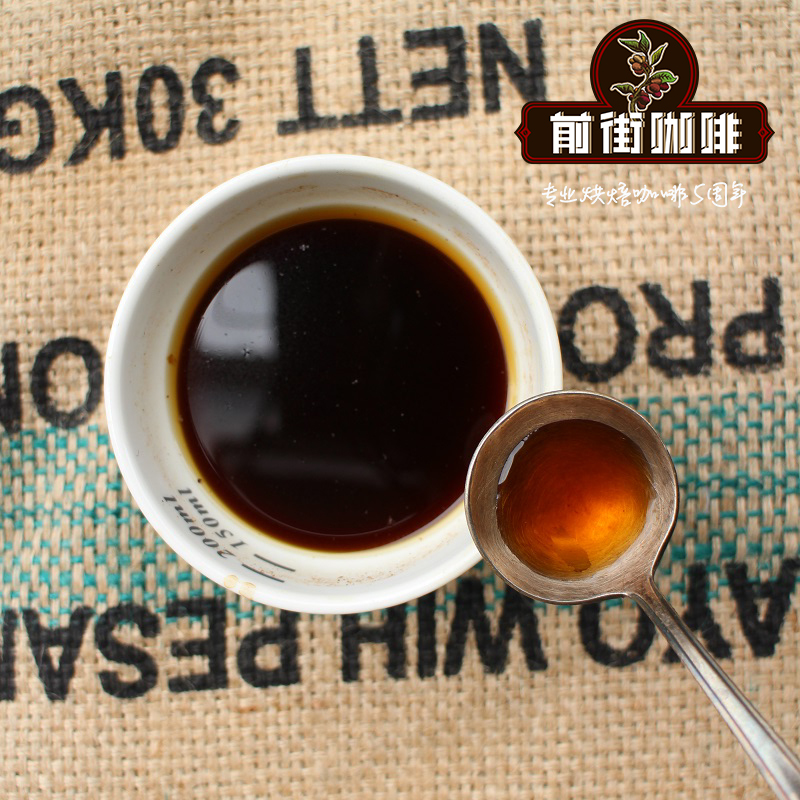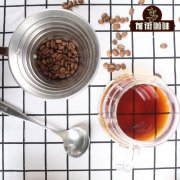A brief History of Burmese Coffee Industry Why is Burmese coffee cheap? Burmese coffee brand recommendation

Professional coffee knowledge exchange more coffee bean information please follow the coffee workshop (Wechat official account cafe_style)
Over the past few years, Myanmar's coffee industry has emerged on the international stage with the cooperation of the Myanmar Agricultural Promotion Agency (Myanmar Agriculture Department), the United States Agency for International Development (USAid), the Coffee quality Association (CQI) and the country's hard-working coffee farmers. Nearly a hundred years ago, when British missionaries introduced the first coffee trees from Costa Rica, the coffee industry in Myanmar was still like a newborn chick, but now it has thrived into a productive industry. OGS works closely with Burmese boutique coffee bean producers to provide high quality Burmese coffee beans to bakers to serve their customers who want to try different or new producing areas.
Myanmar is bordered by India, Bangladesh and the Bay of Bengal to the west, China, Laos and Thailand to the east, the Himalayas to the north and the Andaman Sea to the south. Few countries can share borders with such culturally diverse neighbors.
A brief History of Burma Coffee
1885: British missionaries plant the first batch of coffee in Myanmar
1936: Myanmar exports 95 tons of coffee
1952: Smee 795 coffee is introduced on the outskirts of Binwulun town in Mandalay district.
1986: the Burmese government (GOM) promotes a national coffee cultivation plan and imports T8667 and Kaduai varieties from Costa Rica
2015: Myanmar, with the assistance of the American Fine Coffee Association (SCAA), the Coffee quality Association (CQI), Wenlock International (Winrock) and the United States Agency for International Development (USAid), hosted Myanmar's first national cup testing conference in Yangon, which significantly improved the quality of coffee from planting to post-processing.
2016: Burmese coffee makes its debut at the annual coffee conference held by the American Fine Coffee Association (SCAA) in Atlanta, USA.
According to the Food and Agriculture Organization of the United Nations (FAO), the north of Myanmar has the potential to produce the largest amount of high-quality Arabica coffee with the advantages of a high-quality laterite plateau and other advantages such as more than 1000 meters (3300 feet) above sea level, soil suitable for coffee trees, average rainfall of 1500 to 2500 cm (59 to 79 inches), and obvious dry season necessary for growing coffee trees.
The environment of growing coffee in Myanmar
The cultivation and production of high-quality coffee must take into account several important environmental factors, including altitude and temperature, rainfall and water supply, soil, slope aspect and slope.
Altitude
Altitude affects several key environmental factors, so altitude should be taken into account in determining the ideal coffee growing environment in addition to temperature, rainfall and water supply, soil, aspect and slope.
Arabica coffee must be grown at an altitude of more than 1000 meters, and the quality of low-altitude Arabica coffee does not meet the requirements of the global market. Coffee farms and micro-farms in Myanmar are usually located between 1100 and 2200 meters above sea level, while coffee in some remote areas, such as Chin State and Chin and Kachi, grows at an altitude of 2800 meters.
Temperature
Arabica coffee prefers cool temperatures, with the most suitable daily average temperature between 20 and 24 degrees Celsius (68 to 75 degrees Fahrenheit), while the average temperature in Pyin Oo Lwin is 19.7C (67.5F). If the temperature exceeds 30 degrees Celsius (86 degrees Fahrenheit), it may cause the photosynthesis of coffee trees to stop. on the other hand, if the average temperature is below 15 degrees Celsius (59 degrees Fahrenheit), it will inhibit the growth of coffee trees and make coffee inferior. As Arabica coffee is extremely prone to frost damage, it is necessary to make good use of tree shading to reduce possible damage.
Rainfall and Water supply in Myanmar
The ideal rainfall for growing Arabica coffee is more than 1200 to 1500 centimeters (47 to 60 inches) per year, and the total rainfall and rainfall distribution patterns are equally important, while the annual rainfall in Pyin Oo Lwin is 1400 centimeters (55 inches).
Shade tree
Coffee farms in Myanmar generally use silver oaks as shade trees. in addition to blocking the wind, silver oaks also have many other important functions. When the climate is dry, the shading of silver oak can protect young coffee trees from drought stress and avoid overexposure, and shading can achieve a better balance in flowering and growth, and reduce the probability of frost damage. In addition, the fallen leaves and pruning of silver oak produce organic matter and nutrients, which can continuously provide the soil with large amounts of micronutrients needed to maintain health.
Variety
At present, several coffee varieties have been planted and tested in the main coffee growing areas in Myanmar, including SL-34, S795, Catuai and T8667.
T8667
Country: Costa Rica
Growth habits: short
Cup test quality: good, with aroma of herbs and pericarp
Remarks: huge fruits and coffee beans
S795
Country: India
Growth habits: tall, upright and open
Cup test quality: excellent performance in all aspects and with mocha flavor
Remarks: the fruit is huge.
Kaduai (Catuai)
Country: Brazil, between Mundo Novo and Kaddura
Growth habits: short and dwarf plants
Cup test quality: good quality of coffee beans and good size of coffee beans
Remarks: high yield plants
SL-34
Country: Kenya (selected by French Missionaries)
Growth habits: tall, upright and open
Cup test quality: famous for its excellent sweetness, balance and complex acid quality.
Remarks: the fruit is huge.
Brief introduction to Humanities
Coffee growing areas in Myanmar are mostly hilly and tribal environments, and people who work on coffee farms have lived and worked in this hilly environment for generations. So they naturally know a lot about the land in the area and know how to grow it to get the best production results. Perhaps, most Burmese people focus on big temples, and their simple life makes Burmese people have a cheerful and friendly nature.
Chemicals and pesticides
Burmese coffee does not contain any chemicals and pesticides. Farmers use natural fertilizers derived from cattle and chickens, while focusing on the sustainable development of the land, especially in southern Shan State.
Qianjie coffee: Guangzhou bakery, the store is small but a variety of beans, you can find a variety of unknown beans, but also provide online store services. Https://shop104210103.taobao.com
Important Notice :
前街咖啡 FrontStreet Coffee has moved to new addredd:
FrontStreet Coffee Address: 315,Donghua East Road,GuangZhou
Tel:020 38364473
- Prev

Burmese Coffee Manor-wonderful Mountain Jade Manor Coffee Flavor introduction how about Burmese coffee
Professional coffee knowledge exchange more coffee bean information please follow the Coffee Workshop (official Wechat account cafe_style) introduction: Myanmar is located between 10 and 28 degrees north latitude, the height of the northern plateau in the territory 500m to 3000 meters, the annual rainfall 1500mm~2000mm, and mostly undeveloped virgin forests, can be said to be an excellent place to grow coffee beans. The old name of Bingwulun is wonderful (May
- Next

A brief History of Burmese Coffee Industry Why is Burmese coffee cheap? Burmese coffee brand recommendation
For more information on coffee beans, please follow the coffee workshop (Wechat official account cafe_style). In the past few years, Myanmar's coffee industry has started internationally with the cooperation of Myanmar's Agricultural Promotion Agency (Myanmar Agriculture Department), the United States Agency for International Development (USAid), the Coffee quality Association (CQI) and the country's hard-working coffee farmers.
Related
- Does Rose Summer choose Blue, Green or Red? Detailed explanation of Rose Summer Coffee plots and Classification in Panamanian Jade Manor
- What is the difference between the origin, producing area, processing plant, cooperative and manor of coffee beans?
- How fine does the espresso powder fit? how to grind the espresso?
- Sca coffee roasting degree color card coffee roasting degree 8 roasting color values what do you mean?
- The practice of lattes: how to make lattes at home
- Introduction to Indonesian Fine Coffee beans-- Java Coffee producing area of Indonesian Arabica Coffee
- How much will the flavor of light and medium roasted rose summer be expressed? What baking level is rose summer suitable for?
- Introduction to the characteristics of washing, sun-drying or wet-planing coffee commonly used in Mantenin, Indonesia
- Price characteristics of Arabica Coffee Bean Starbucks introduction to Manning Coffee Bean Taste producing area Variety Manor
- What is the authentic Yega flavor? What are the flavor characteristics of the really excellent Yejasuffi coffee beans?

